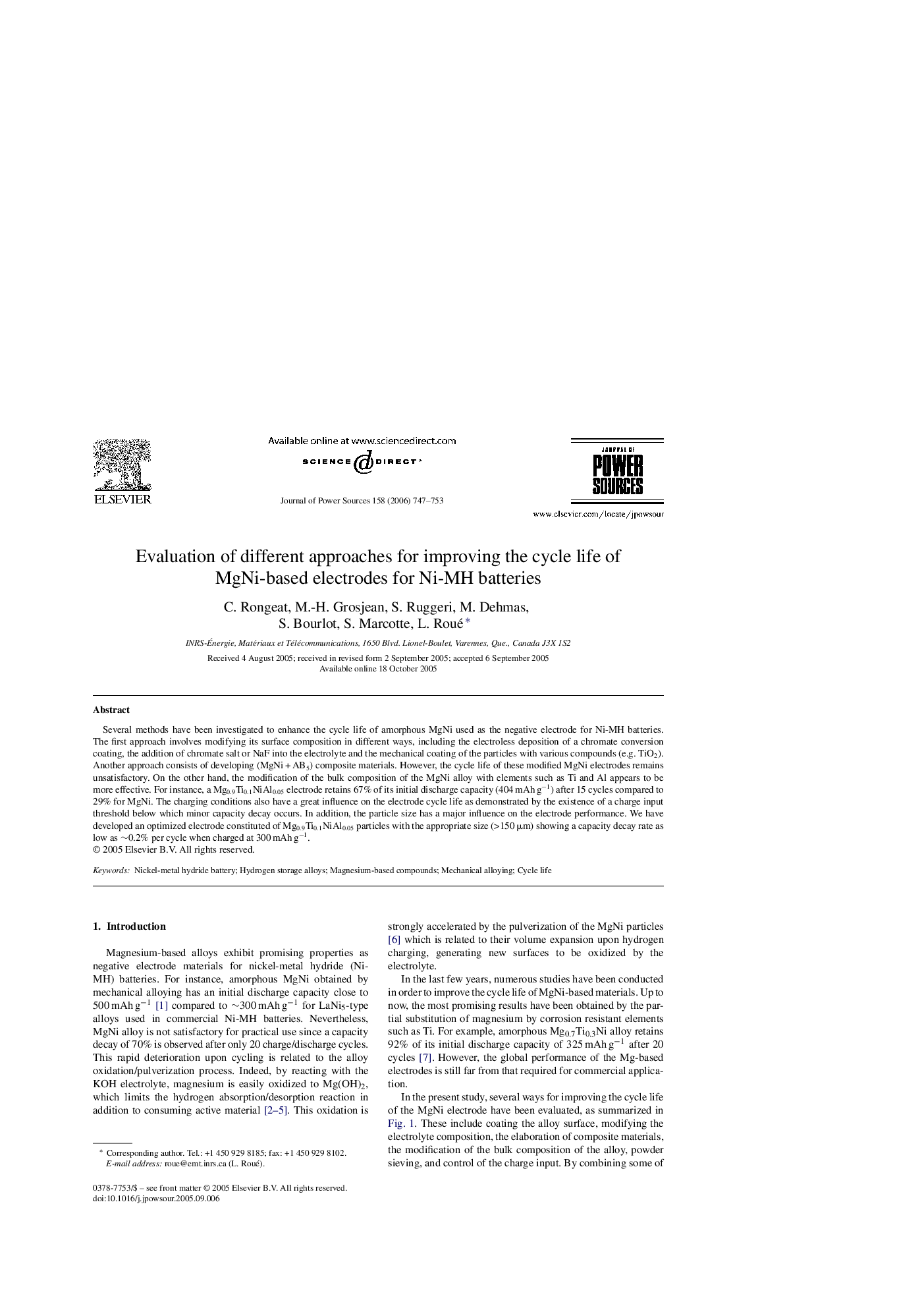| Article ID | Journal | Published Year | Pages | File Type |
|---|---|---|---|---|
| 1287629 | Journal of Power Sources | 2006 | 7 Pages |
Several methods have been investigated to enhance the cycle life of amorphous MgNi used as the negative electrode for Ni-MH batteries. The first approach involves modifying its surface composition in different ways, including the electroless deposition of a chromate conversion coating, the addition of chromate salt or NaF into the electrolyte and the mechanical coating of the particles with various compounds (e.g. TiO2). Another approach consists of developing (MgNi + AB5) composite materials. However, the cycle life of these modified MgNi electrodes remains unsatisfactory. On the other hand, the modification of the bulk composition of the MgNi alloy with elements such as Ti and Al appears to be more effective. For instance, a Mg0.9Ti0.1NiAl0.05 electrode retains 67% of its initial discharge capacity (404 mAh g−1) after 15 cycles compared to 29% for MgNi. The charging conditions also have a great influence on the electrode cycle life as demonstrated by the existence of a charge input threshold below which minor capacity decay occurs. In addition, the particle size has a major influence on the electrode performance. We have developed an optimized electrode constituted of Mg0.9Ti0.1NiAl0.05 particles with the appropriate size (>150 μm) showing a capacity decay rate as low as ∼0.2% per cycle when charged at 300 mAh g−1.
